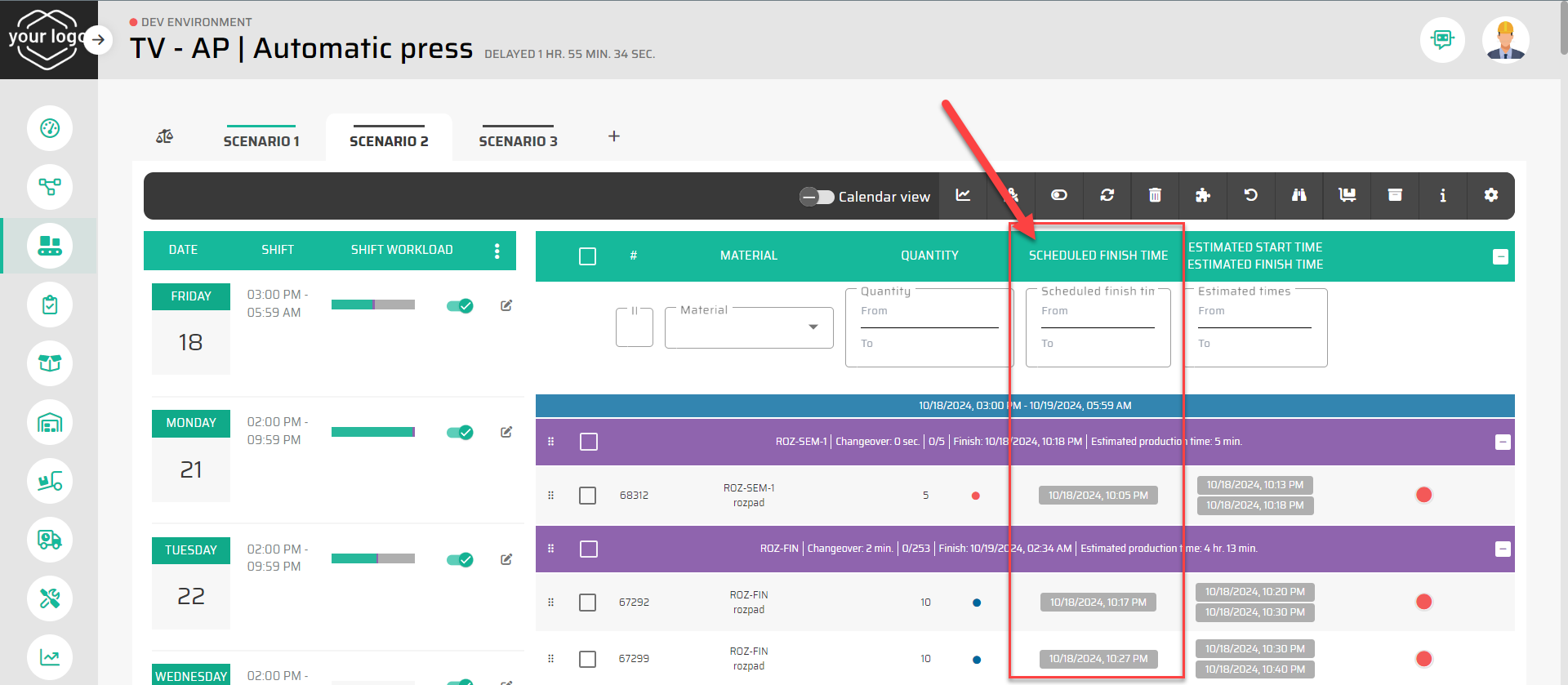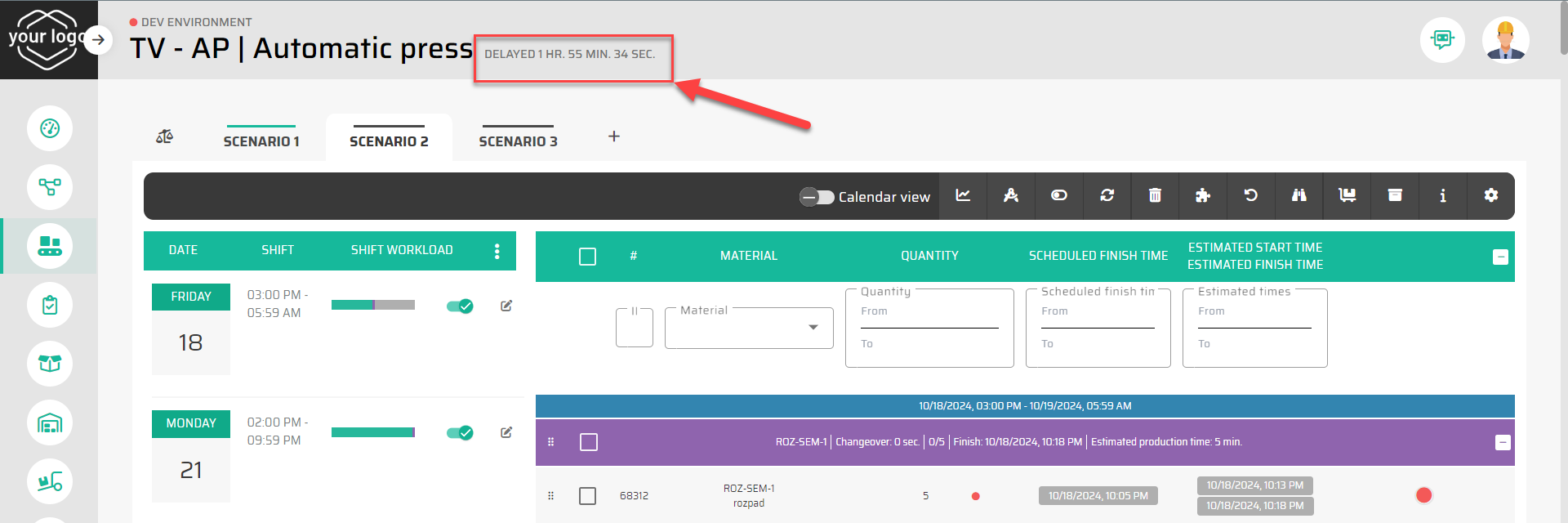Reset Time Difference
Reset Time Difference is a crucial feature that enables production planners to track and compare the actual production timeline against the original schedule. This functionality assists in identifying delays, bottlenecks, and areas for improvement in the production process.
Key Features
Purpose of Reset Time Difference
The primary function of the Reset Time Difference is to capture the planned completion times of production items at the beginning of a production cycle. By doing so, planners can establish a baseline against which actual performance can be measured.

Tracking Delays and Performance
As production progresses, the system continuously updates the Estimated Start Time and Estimated Finish Time based on real-time events, such as:
Commencement of production items
Completion of production items
Assignment of new items
Rescheduling of the queue
This real-time tracking allows planners to assess whether the production is on schedule, ahead, or behind.
Scheduled Finish Time
The Scheduled Finish Time reflects the originally planned completion time for each production item. This value remains unchanged, even if production items are completed ahead of schedule or skipped. It serves as a historical reference to compare against actual production performance.

Analyzing Production Efficiency
After resetting the time difference at the start of a production shift, planners can monitor how actual production outcomes align with the initial plan. This includes tracking any delays that occur during the shift and analyzing the causes of deviations from the original schedule.

Insights for Continuous Improvement
The data generated from comparing planned versus actual performance provides valuable insights for future planning cycles. Planners can identify patterns in delays, assess the impact of operator efficiency, and make data-driven adjustments to optimize production processes.
By utilizing the Reset Time Difference feature, production planners enhance their ability to manage production schedules effectively, ensuring that they can respond promptly to any deviations from the plan and continuously improve operational efficiency.
